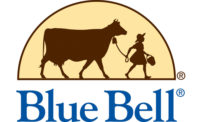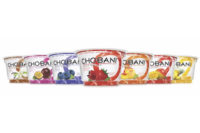Picture this: You discover a problem with your food supply—a contaminant, an undeclared allergen or a failure at a critical control point. You issue a recall, and the news breaks. What’s next?
Media coverage can have a range of effects on your brand and can even help you during a recall. In fact, more than half of consumers say they are interested in hearing a producer’s side of the story, one in four is willing to buy the product as soon as it’s available again, and 66 percent of consumers return within a few months.
According to the recent SHS FoodThink report, “Allies in Unexpected Places—How Trust in the Media Can Help Your Food Brand,” the media’s role on shaping perception of a food producer is critical—and isn’t necessarily a bad thing. The report explains how consumers react when the media reports a food scare and what manufacturers can do to protect themselves and their consumers.
In the study, SHS found most Americans aren’t automatically swayed by the news. “Americans rely on the media, especially local TV, to get information about food products or issues they care about, but they don’t stop there,” says Jamil Malone, FoodThink analyst. “After they see those stories, they do their own research and talk to their family and friends about what they’ve heard.”
Though 67 percent of consumers still want the media to break stories about how food is produced, only 45 percent think the media is more trustworthy than food manufacturers and restaurants. This belief provides a lot of opportunities for producers to share their side of the story. The primary thing to remember is transparency.
“Food marketers may hesitate to talk about a recall or food safety issue, but they can calm consumers’ fears by being transparent about their efforts in numerous channels, including building relationships with reporters,” Malone says. “Consumers want to hear all sides of the story, and they’ll fill in the gaps themselves if they don’t hear from the company.”
When news of a recall hits the media, consumers often go through a cycle of behavior. First, they hit social media, talk to family and friends and check out local television news while the story is fresh. Once the rumbling has died down, consumers urn to government and company websites to continue their education on the issue.
Brands can take advantage of consumers’ proclivity for sharing stories on social media and with family by cultivating brand advocates who will be vocal in a time of crisis, sharing and driving home the positive information brands have provided.
Overall, transparency is key. For example, in the case of Blue Bell Creameries—which experienced Listeria contamination at its plants, leading to a major recall—the company’s willingness to keep consumers informed about the situation and its efforts to rectify it through continuous website updates and media engagement has led to a positive outcome. While more than half of consumers reported remembering the food scare, when the ice cream became available again, consumers came back to the product immediately and celebrated their purchases on social media.










